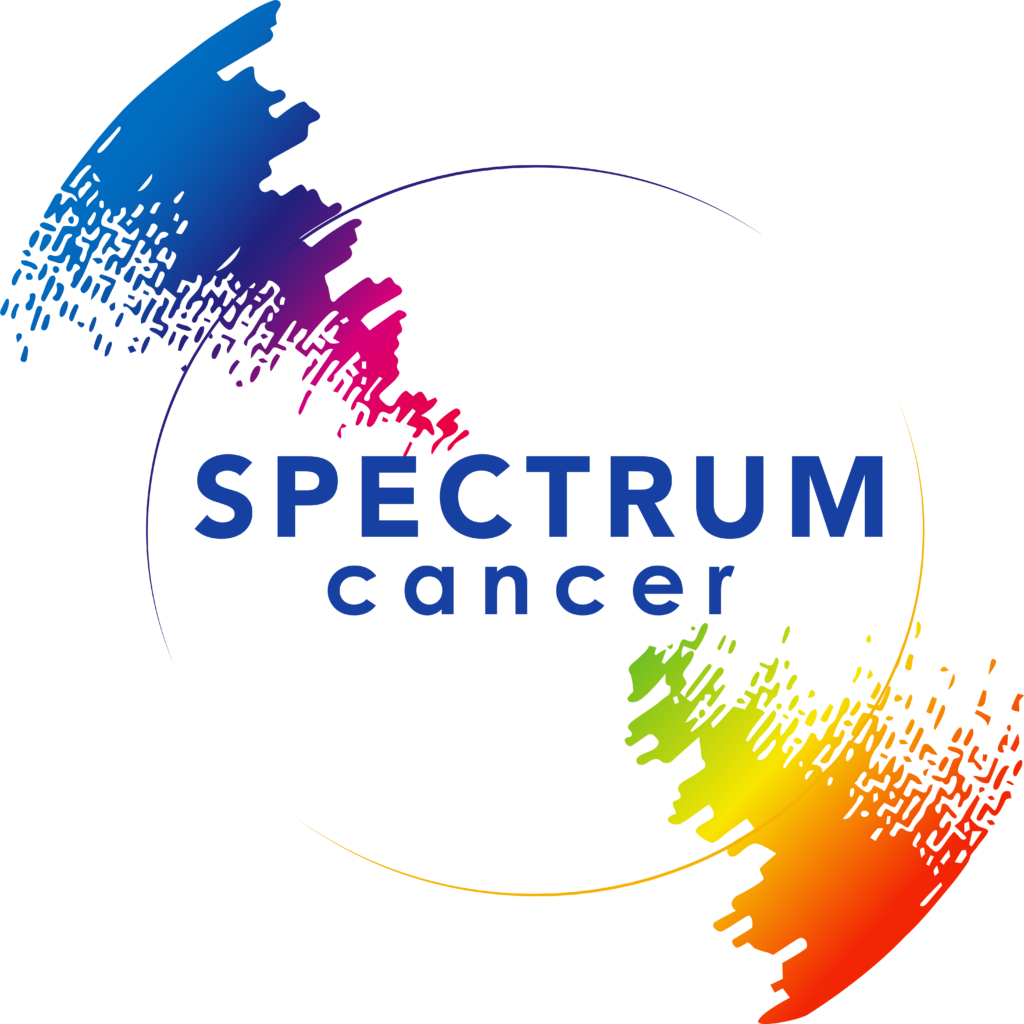Pancreatic Radiation Therapy
Pancreatic Radiation Therapy
INTRODUCTION
RADIATION THERAPY
Only 20% of patients with pancreatic cancer have potentially resectable tumors with 40% having locally advanced tumors and the remaining 20% having metastatic disease. While surgery is standard treatment for patients with resectable tumors, surgery alone does not always result in a cure with 20% to 25% developing local recurrence and 50% to 60% of patients developing distant recurrence.1
As a result of these recurrence rates, radiation therapy is a common treatment modality for pancreatic cancer and is often used in combination with other treatments such as surgery and chemotherapy.
Radiation therapy involves the use of high-energy X-rays or other particles to target and destroy cancer cells or inhibit their ability to grow and divide. The decision to include radiation in the treatment plan for pancreatic cancer depends on several factors, including the type and stage of the cancer, the characteristics of the tumor, the type of surgery performed, and individual patient considerations.
The goal of radiation therapy is to target and destroy cancer cells or slow down their growth. It can be administered in different ways, and the choice of radiation therapy depends on the specific characteristics of the cancer and the overall treatment plan. Radiation therapy for pancreatic cancer is typically delivered in combination with concurrently with 5-fluorouracil (5-FU) or gemcitabine. Chemotherapy is added to radiation therapy to improve the ability to treat micrometastic disease.2 While combining radiation with chemotherapy increases the risk of toxicity, this combination is associated with better outcomes than radiation therapy alone.3
Examples of types of radiation therapy utilized for pancreatic cancer:
External Beam Radiation
This is the most common type of radiation therapy for pancreatic cancer. It involves delivering radiation from outside the body to the targeted area. There are different types of external beam radiation techniques used for pancreatic cancer treatment, each with its own advantages and considerations. Main types:
Standard External Beam Radiation (EBRT)
Is the most common form of radiation therapy for pancreatic cancer. It involves delivering radiation from outside the body using a machine. The radiation is precisely directed to the tumor and surrounding areas.
Intensity-Modulated Radiation Therapy (IMRT)
Enables a more precise targeting of the radiation to the tumor while sparing nearby healthy tissues.
Stereotactic Body Radiation Therapy (SBRT)
Is a specialized form of external beam radiation therapy that delivers highly focused, high-dose radiation to the tumor in a few treatment sessions. It is often used for tumors that are confined to the pancreas and nearby structures.
Intraoperative Radiation Therapy (IORT)
Involves delivering radiation directly to the tumor during surgery. This approach allows for targeted delivery of radiation to the tumor bed while minimizing exposure to surrounding healthy tissues.
Chemoradiation
The combination of radiation therapy with chemotherapy is commonly used in the treatment of pancreatic cancer. Chemoradiation can be administered before surgery (neoadjuvant) or after surgery (adjuvant) to enhance the effectiveness of both treatments. Intensity-modulated radiation therapy (IMRT) and stereotactic body radiation therapy (SBRT) enable radiation dose escalation and minimize the risk of radiation treatment-related toxicities compared to standard external beam radiation.1 IMRT also permits the ability to customize the dose and delivery of the radiation therapy and dose distribution, better protecting surrounding organs.
Indications for radiation therapy for pancreatic cancer:
Following surgery (e.g., Whipple procedure or distal pancreatectomy) to remove the tumor, adjuvant radiation therapy may be recommended to target any remaining cancer cells and reduce the risk of recurrence. This is often combined with chemotherapy.
When used in an adjuvant setting, chemoradiotherapy is used to control microscopic local residual disease and further eradicate micrometastatic disease that is neither clinically nor radiographically apparent at the time of surgery and could result in local recurrence and distant metastases. Postoperative complications and the development of side effects during chemotherapy, however, can limit the use of this treatment approach for some patients.4
While limited data exists supporting the use of adjuvant radiation treatment following surgery, it is commonly used as a part of the treatment of pancreatic cancer. The current American Society of Radiation Oncology (ASTRO) guidelines recommend utilizing conventional fractionated adjuvant radiation therapy in patients with high-risk tumors which are associated with positive lymph nodes or positive margins.5 Results are pending from a recent study (NCT0103649) which is assessing the potential beneficial impact of adding radiation treatment to chemotherapy in the adjuvant setting following surgery for patients with pancreatic cancer.
Neoadjuvant Treatment Before Surgery
In some cases, radiation therapy is administered before surgery to shrink the tumor and make it more operable. This neoadjuvant approach is often combined with chemotherapy. This approach has been shown to be effective in increasing the resectability of localized pancreatic cancer, namely borderline and locally advanced pancreatic cancer.6
Locally Advanced Pancreatic Cancer
For cancers that have spread to nearby structures but are still potentially resectable, radiation therapy may be used to target the tumor and improve the chances of successful surgery. The role of chemoradiation in locally advanced pancreatic cancer is not firmly established.1 While historical studies reported contradictory results regarding the benefit of chemoradiation in combination with chemotherapy compared to chemotherapy alone,7,8 several ongoing trials are studying the use of newer radiation treatment approaches for this patient population.1,6
Unresectable Pancreatic Cancer
In cases where surgery is not an option due to the extent of the tumor, radiation therapy may be used as a primary treatment to control the growth of the cancer and manage symptoms.
Palliative Treatment
Radiation therapy is often used palliatively to relieve symptoms and improve the quality of life in patients with advanced pancreatic cancer. This may include alleviating pain, reducing tumor size, or addressing obstructive symptoms.
References
- Gamboa AC, Lee RM, Maithel SK. The role of radiation for pancreatic Adenocarcinoma.J Pancreatol. 2020;3:72-80. doi: 10.1097/JP9.0000000000000045
- Falco M, Masojć B, Sulikowski T. Radiotherapy in Pancreatic Cancer: To Whom, When, and How? Cancers (Basel). 2023 Jun 28;15(13):3382. doi: 10.3390/cancers15133382.
- Sultana A, Tudur Smith C, Cunningham D, et al. Systematic review, including meta-analyses, on the management of locally advanced pancreatic cancer using radiation/combined modality therapy. Br J Cancer 2007;96:1183–1190
- Bittner MI, Grosu AL, Brunner TB. Comparison of toxicity after IMRT and 3D-conformal radiotherapy for patients with pancreatic cancer—a systematic review. Radiother Oncol 2015;114:117–121.
- Eastham JA, Auffenberg GB, Barocas DA, et al. Clinically localized prostate cancer: AUA/ASTRO guideline. Part III: principles of radiation and future directions. J Urol. 2022;208(1):26-33.
- Malla M, Fekrmandi F, Malik N, Hatoum H, George S, Goldberg RM, Mukherjee S. The evolving role of radiation in pancreatic cancer. Front Oncol. 2023 Jan 11;12:1060885. doi: 10.3389/fonc.2022.1060885.
- Gastrointestinal Tumor Study Group. Treatment of locally unresectable carcinoma of the pancreas: comparison of combined-modality therapy (chemotheraphy plus radiotherapy) to chemotheraphy alone. J Natl Cancer Inst 1988;80:751–755.
- Klaassen DJ, MacIntyre JM, Catton GE, et al. Treatment of locally unresectable cancer of the stomach and pancreas: a randomized comparison of 5-fluorouracil alone with radiation plus concurrent and maintenance 5-fluorouracil—an Eastern Cooperative Oncology Group Study. J Clin Oncol 1985;3:373–378.
- NCCN Clinical Practice Guidelines in Oncology (NCCN Guidelines®) Pancreatic Adenocarcinoma. Version 1.2024 — December 13, 2023







